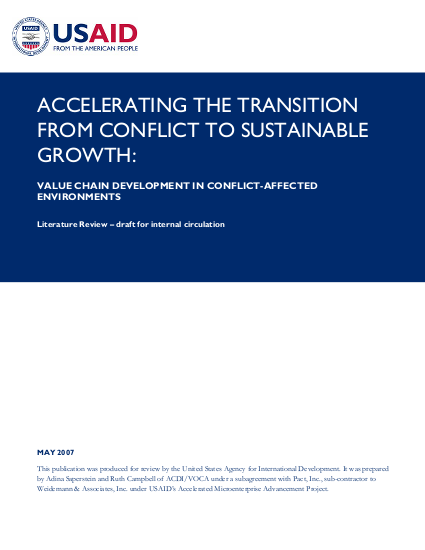
Economic factors are widely recognized to be among the leading drivers of modern conflict. Such factors include lack of access to basic goods and services, deterioration of livelihoods, limited opportunities available to specific groups, and the escalation of illicit activities. While hundreds of conflicts have emerged over the past decade,1 triggered by a complex interplay of socio-cultural, political and economic factors, economic factors have tended to mobilize these other grievances into full-scale conflict. Moreover, economic resources sustain and expand the scope and scale of conflict to increasingly devastating proportions.
There is broad consensus among donors, practitioners and policymakers that widespread, equitable and sustainable economic growth has the potential to mitigate the emergence and re-emergence of conflict and stabilize conflict-prone societies. However, the means of achieving sustainable and equitable economic growth in conflict-affected environments have been less clearly articulated. Conflict-affected environments often experience large inflows of highly-subsidized assistance early on in the post-conflict phase, which drop sharply as soon as the conflict has drifted from public and political attention. Too often, there are no systems or strategies in place to build on these initial subsidies to create lasting economic growth.
Throughout this literature review, the focus will be on value chain development as an effective instrument for sustainable economic development. USAID’s value chain approach (summarized in Annex A) identifies the full range of factors that affect the performance of an industry, including the structure, relationships and dynamics that characterize it, and the potential for technological upgrades and behavioral shifts to increase its competitiveness. The aim of the approach is to create incentives for value chain actors to change behavior to positively affect investment, learning and innovation, and to engage in strategic collaboration.